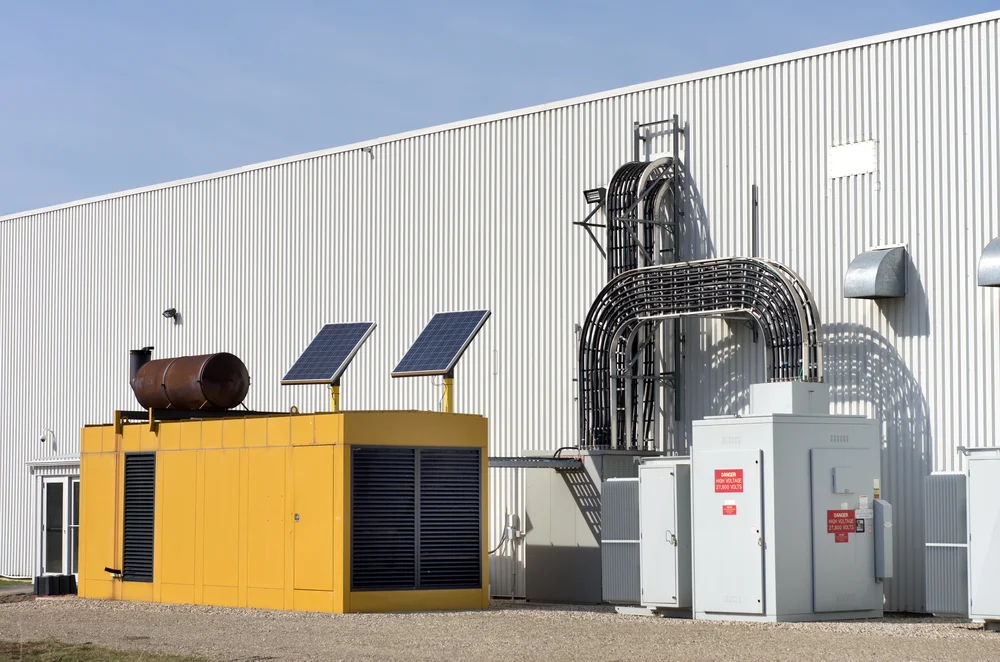Cooling Options for a Sealed Electrical Enclosure

Although industrial electronic components are generally robust and well designed, they are sensitive to contamination, moisture, and excessive temperature. They need to be kept cool, dry, and free of dust, debris, and corrosive chemicals. These requirements are to a certain extent in conflict because good ventilation is generally required for cooling, but protection from dirt and contamination requires a sealed enclosure.
This can be achieved using closed loop cooling systems that are designed to remove heat and keep equipment at a safe temperature while maintaining the integrity of the sealed electrical enclosure.
Heat Generation by Electronic Equipment
Heat generated by electronic equipment is due to the characteristic of electronics where power is dissipated by the equipment itself. In a panel containing a lot of electronic equipment, heat generation is significant and if it is not removed, the enclosure temperature will rise until equilibrium is reached, which in most cases will exceed the recommended safe operating temperature of the equipment.
Maximum Recommended Electronic Enclosure Temperature
The ideal maximum allowable temperature for electronic components is generally considered to be 95 ºF or 35 ºC. This is relatively low, and many may consider such an approach conservative, but this view is based on the following:
-
Electronic equipment service life reduces about 50 percent for every 10 ºC increase in temperature.
-
The localized temperatures of electronic components will be higher.
-
Equipment may malfunction if it’s safe working temperature is exceeded.
Cooling Options
As ventilation is not an option with a sealed electrical enclosure, heat needs to be dissipated through some form of active cooling. Two practical closed loop alternatives exist:
-
Air-to-air heat exchangers: In order to maintain the components within a sealed environment, some form of heat exchange must take place that prevents direct contact with the outside air. This can be achieved with heat pipe technology that utilizes conduction and phase transition in an evacuated tube to transfer heat. This technology uses the high heat transfer coefficients of boiling and condensation of a suitable fluid and is very efficient, requiring no moving parts apart from air circulation fans.
-
Enclosure air conditioner: Although heat pipe technology is efficient, it has capacity limitations. For higher heat loads and ambient temperatures an air conditioner solution is more effective. Units are available with capacities ranging from 1,000 to 20,000 BTU/hr and can be mounted on the sides or doors of electrical enclosures.
Options for Harsh Environments
Electrical enclosures need to be installed in many locations that can be detrimental to the equipment in the electrical enclosure. Some of the issues that occur are:
-
Corrosive environments: To prevent corrosion, the cooling equipment can be housed in sealed stainless steel NEMA 4X enclosures, anti-corrosive coatings applied to condenser coils, and filters fitted to limit ingress of corrosive substances.
-
Condensation: Water will condense on equipment and surfaces when ambient temperatures drop below the dew point. This is undesirable as it can cause damage to or failure of sensitive equipment. In these situations, air conditioners or enclosures are equipped with heating elements to keep internal temperatures above the dew point.
Keeping Electronics Cool Pays Off
The adoption of active cooling options for sealed electronic enclosures ensures that the equipment is kept at an operating temperature that promotes long, reliable life. These solutions maintain the integrity of the electrical enclosures, ensuring equipment is protected from unacceptable environmental conditions. To learn more about cooling options for sealed enclosures, contact the sales team at Thermal Edge.

